Oxfordshire Election Diary: Week 3

The deadline has passed, and we now know who’s standing for election in every seat in Oxfordshire.
This is the list you’ll be seeing on ballot papers on 4th July. Oxford East voters have an impressive choice of 12 candidates, only surpassed by Rishi Sunak’s Richmond & Northallerton constituency with 13 (including Count Binface).
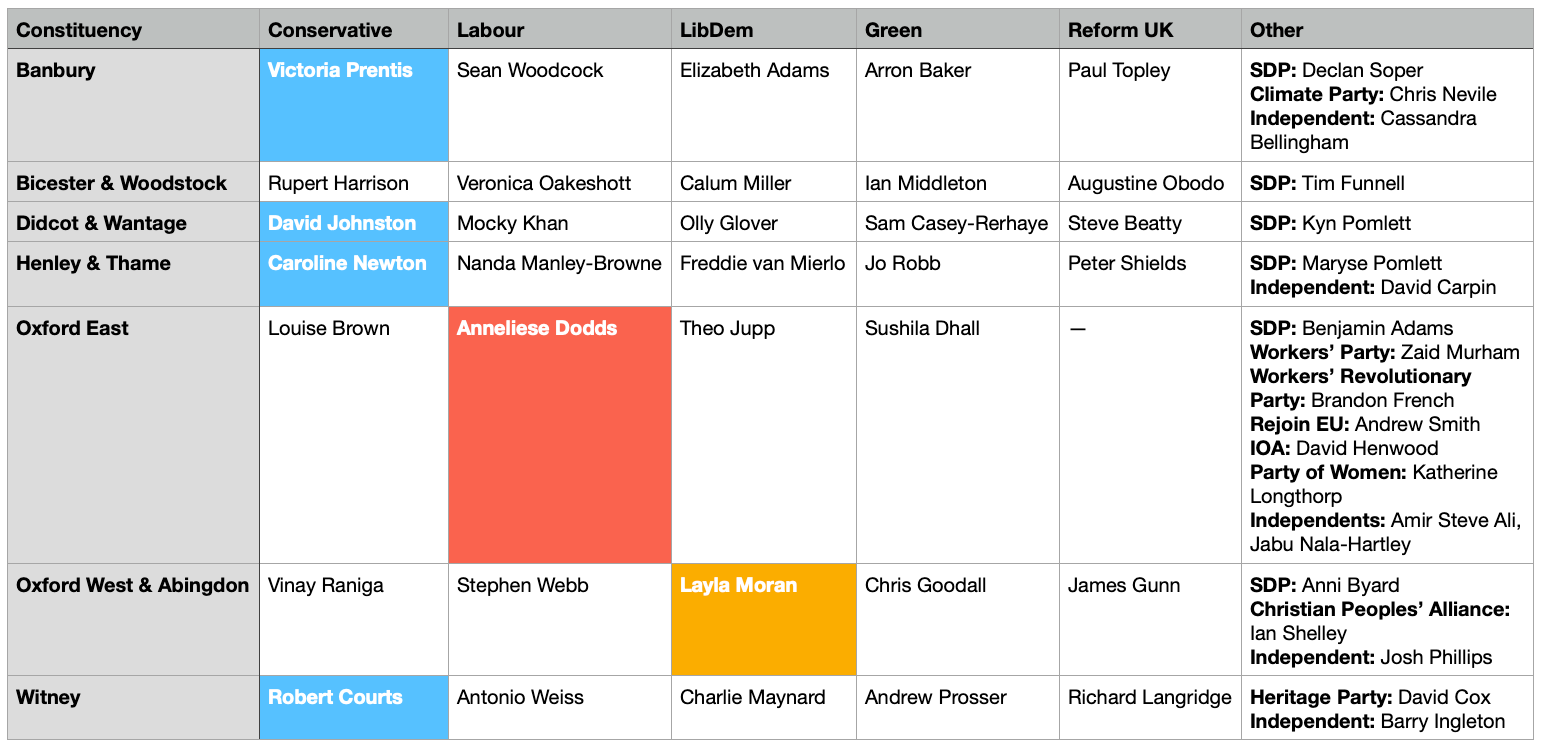
Why have the constituencies changed?
This is a “change election” in more ways than one. Not only is there political upheaval in Westminster, the boundaries of most seats have changed at the behest of the independent Electoral Commission. Their recently completed review aimed to make constituencies more equal in terms of number of people represented, while keeping the same number of MPs. This explains why the Isle of Wight has gone from one MP to two, and why some of the Scottish MPs have geographically vast constituencies to cover.
In Oxfordshire, the review created a new constituency, Bicester & Woodstock. (Kidlington villagers’ plea for a namecheck was refused on the grounds that constituency names don’t include villages.) The other constituencies have been rearranged to make room, with every seat affected in some way – and that alters the political balance, with traditionally left-leaning areas being absorbed into Conservative-voting seats.
There are a few renamings, too. The Wantage constituency always included Didcot, but now it’s rightly reflected in the name. Similarly, Henley has become ‘& Thame’.
Countywide
Last Monday Nigel Farage announced he’d lead the Reform Party, which may have an impact on Conservative votes in key seats – they're standing in all Oxfordshire seats except, curiously, Oxford East.
On Saturday it was Oxford Pride and, as always, political parties joined the parade. Trans rights became an election issue last week; we asked Oxfordshire’s politicians for their positions.

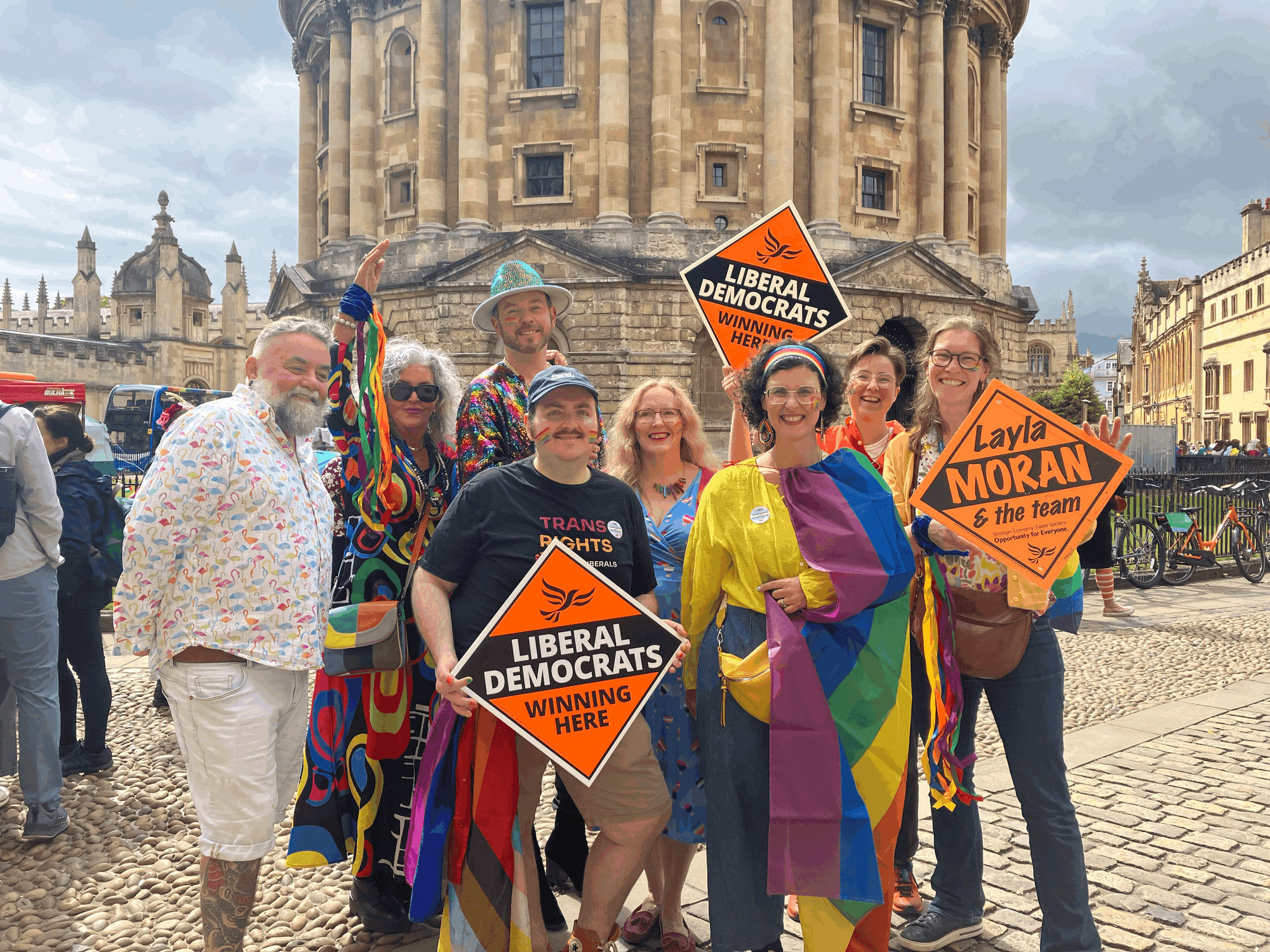
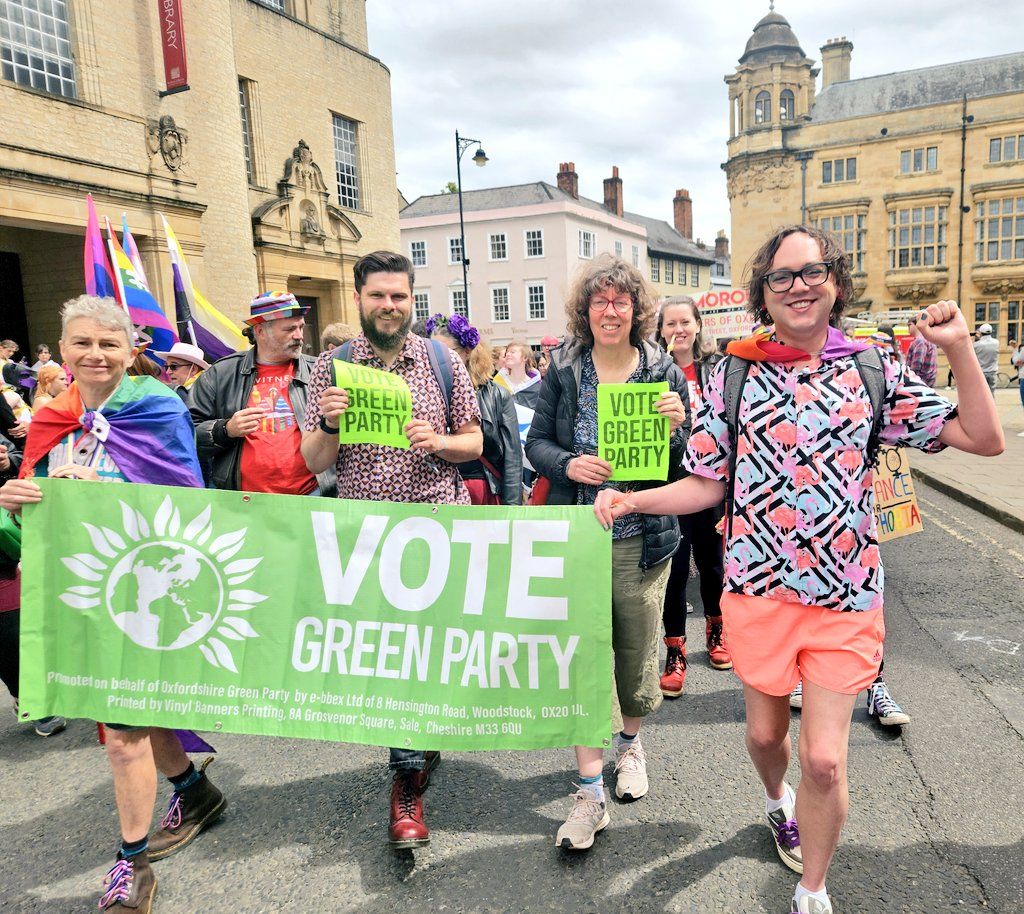
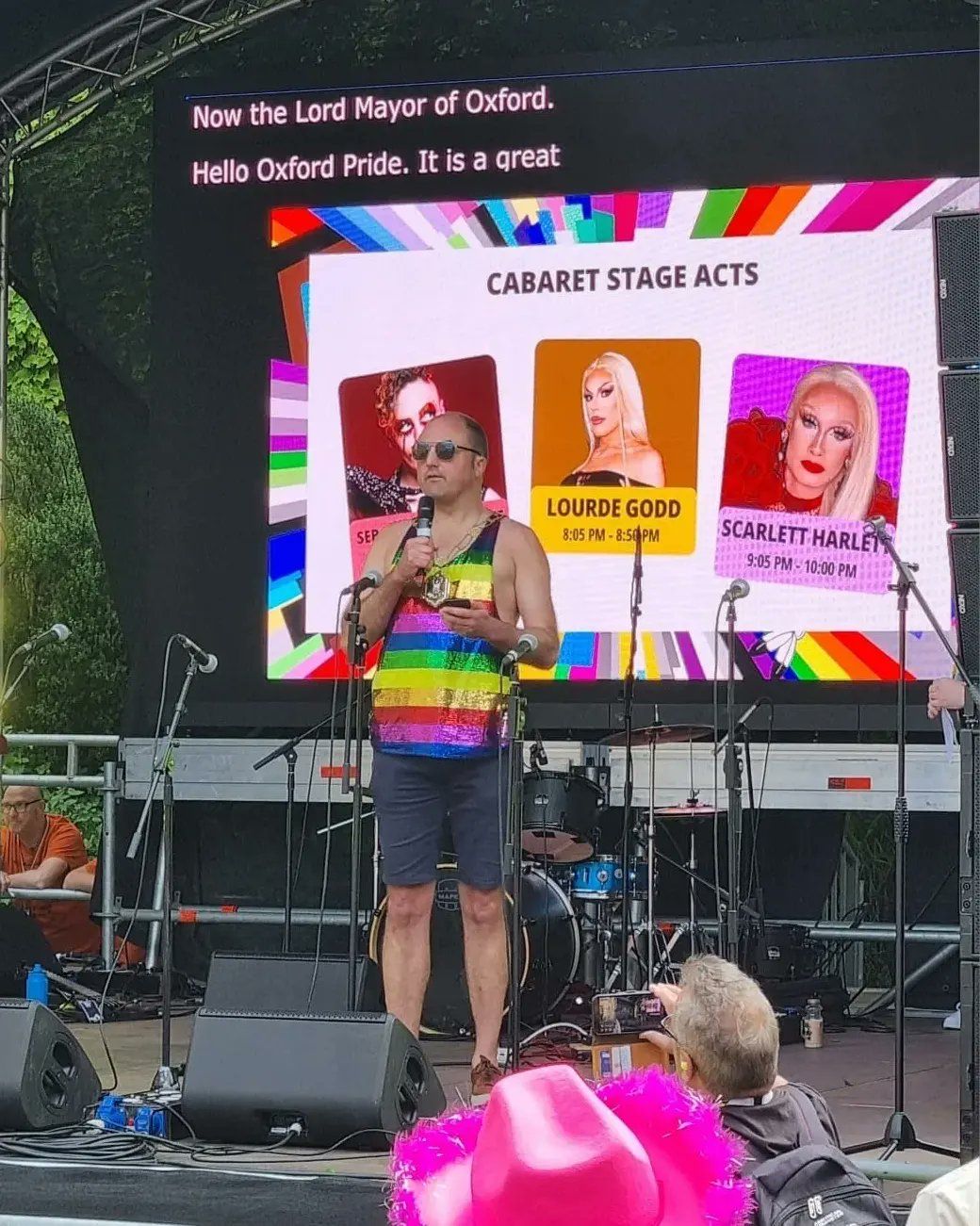
The Prime Minister has been travelling in Oxfordshire, making appearances in Henley and Wantage. It is an interesting reflection on the state of UK politics that the sitting PM finds himself campaigning in what have hitherto been safe Tory seats but that's where we are in the election cycle. In this edition of the diary we will show majorities and how long each seat has been held, for context.
Banbury
With a Conservative majority of 16,813, Banbury has been Conservative since 1922. But the boundaries have changed this time, with Bicester being hived off into its own constituency. In compensation, the Banbury seat gets Chipping Norton, Charlbury, and the rural villages around them.
Sitting MP Victoria Prentis started the week campaigning on the NHS. It’s a salient issue everywhere but particularly here, where there’s an active “Save our Horton” campaign resisting downgrades of the Horton Hospital. As such, she finds herself defending the Conservatives’ record. Here is Prentis' past statement on it.


Tory activists have clearly been in active defence mode, as retired deputy Prime Minister David Lidington was on the doors in this hitherto safe seat, joined by leader of the Conservative group on Oxfordshire and Cherwell councils, Eddie Reeves.
Great evening in Bodicote with @VictoriaPrentis & the @NorthOxonCons team joined by ex de facto Deputy PM, David Liddington. (David was stellar on the doors 👏 )
— Cllr. Eddie Reeves (@Eddiefreeves) June 5, 2024
Good conversations with @Conservatives voters & others who aren't natural Tories, but who are supporting Victoria. pic.twitter.com/C18ae1ukgJ
Banbury is Labour’s main target in Oxfordshire, and the party is throwing the kitchen sink at the seat. Oxford city councillors and activists from around the county have been drafted into door-knocking and leafletting across the villages and towns of the constituency:
Hitting the doors in Middle Barton for @SEANLWOODCOCK with @Oxford_Labour
— Brad Baines (@bradtbaines) June 5, 2024
Talked to several lifelong Conservative voters who will be voting Labour for the first time. It’s time for change! pic.twitter.com/mBH6UqehqR
We calculate that this away-day in Charlbury had an impressive ratio of one canvasser for every 150 residents. In Oxford, you would need 1,000 canvassers to hit the streets simultaneously to equal this.
Thought we'd step it up for the afternoon 🫡🌹 https://t.co/lpOFrksfKf pic.twitter.com/2Zegqy5XDu
— Cllr Anna Railton 🌹 (@rail_guns) June 8, 2024
The LibDems’ Liz Adams is running a low-key campaign, but the party is keeping their presence up chiefly in view of next year’s County Council elections. They recently made significant gains in the Cherwell District Council elections.

Arron Baker, Green candidate, set out his party’s stall as climate change champions:
If there was a reason to #VoteGreen this #GeneralElection24 then this is it. The scientists have warned us, we are now seeing the impacts!
— Arron Baker (@AJBWestOxGreens) June 5, 2024
We need:
1) Reduction in emissions
2) Society adaptation
3) International collaboration
Now is the time to make change!
#ClimateDebate https://t.co/ius5oXywuv
Bicester & Woodstock
This is a new constituency with no previous electoral history, carved out of the adjoining Banbury, Henley and Witney seats.
The projections have aligned around this being a straightforward fight between the Conservatives and the LibDems. Liberal Democrat leader Ed Davey visited Bicester in support of their candidate Calum Miller:
During their visit, Calum and Ed stopped by Bicester Green, a local social enterprise dedicated to reconditioning and reclaiming hardware, household items, and bicycles. The visit emphasized the crucial role of such enterprises in promoting sustainability and supporting local economies. This comes on the heels of a recent report by Friends of the Earth, which ranked the Liberal Democrats’ green credentials far ahead of the Conservatives and Labour.
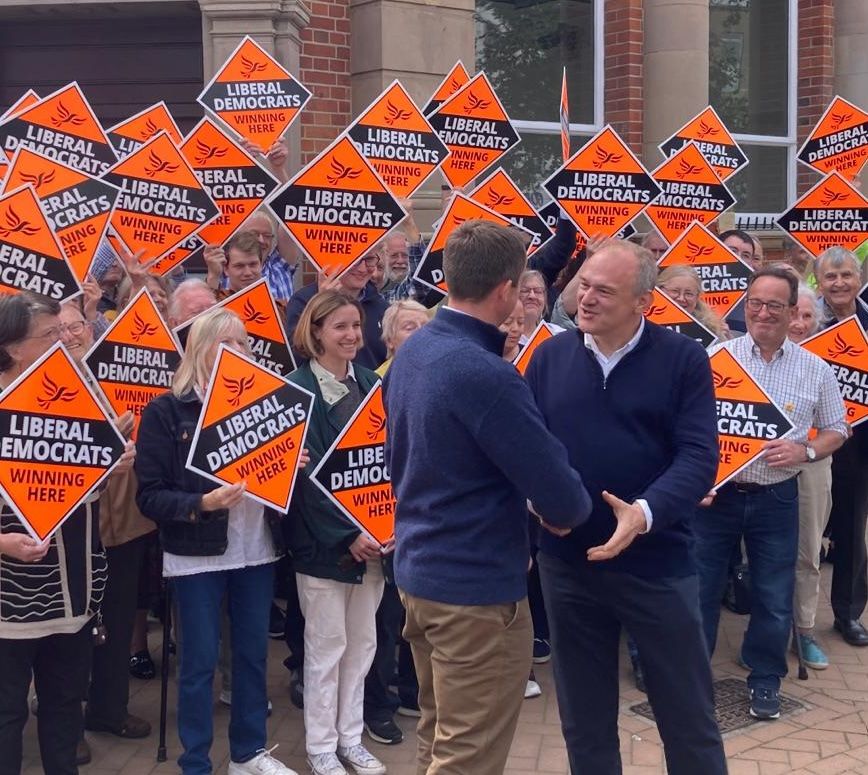

(Are we disappointed that there were no stunts from Ed Davey here? A little.)
The LibDems have made support for carers a key part of their national campaign:
There are millions of carers in our country, taking it one day at a time as they care for those they love. I'm proud to be standing for @LibDems at this election and to have @EdwardJDavey as our leader and as champion for those carers. We will fight for them to get a #FairDeal https://t.co/FuWY0zNjEO
— Calum Miller 🔶 (@CalumMillerLD) June 5, 2024
The Conservative candidate is Rupert Harrison. A profile in the New Statesman last year suggesting that George Osborne's former Chief of Staff might be the future of the Conservative Party, calling his selection “a boost to liberal Tories”. Former Prime Minister and Foreign Secretary David Cameron visited the constituency the next day, having already hosted Security Minister Tom Tugendhat.
I was proud to welcome @David_Cameron back to his old constituency in #Woodstock yesterday. A great public servant and a strong representative for our country in dangerous times. pic.twitter.com/TqwxGfNDEa
— Rupert Harrison (@rbrharrison) June 8, 2024


Labour’s campaign here is a minnow compared to the Banbury effort, reflecting their smaller likelihood of winning the seat. Their candidate Veronica Oakeshott followed up last week’s Woodstock market stall with one in Bicester. Meanwhile Green candidate Ian Middleton set out his stall in an interview:
Here's my interview with the Byline Times which covers many of the questions I'm currently being asked on the doorstep.https://t.co/M3VloB9QvF
— Ian Middleton 🇺🇦 🍃💚🍃 (@IanMiddletonX) June 8, 2024
Didcot & Wantage
The Wantage seat has been Conservative since at least 1983, barring a short period of time when Tory MP Robert Jackson crosssed the floor to Labour. This time it’s donated Faringdon and Shrivenham to the Witney constituency, while Didcot’s growth has been recognised by a tweak to the name.
Sitting MP David Johnston was elected in 2019 with 50% of the vote and a 12,600 majority over the Liberal Democrats. It is a measure of quite how much trouble the Conservatives are in that Prime Minister Rishi Sunak came to Wantage this week, meeting the young footballers of Wantage Town FC who asked him searching questions. (Apparently his Nando's order is "half chicken, medium hot, with chips and broccoli" and he had it twice last week.)
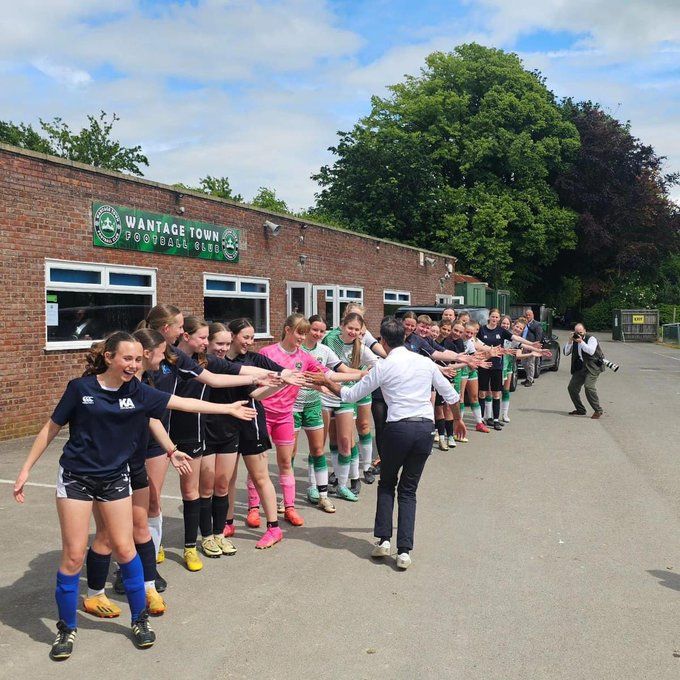

The reflected glow of the PM's successful visit was somewhat short-lived as the Minister for Children appeared not to know how much child allowance was.
'How much is child allowance?'
— LBC (@LBC) June 7, 2024
'That I'm afraid I don't know.'
'Sorry, is your title not Minister for Children?'
Minister for Children, David Johnston, admits he's not sure how much the child allowance is.
@NickFerrariLBC is astonished. pic.twitter.com/mzFlz8AG5M
David Cameron’s tour of his home county of Oxfordshire included a stint campaigning for David Johnston:
Four seats and five great candidates in Oxfordshire today.
— David Cameron (@David_Cameron) June 7, 2024
A sunny day on the campaign trail with @david4wantage, @robertcourts, @rbrharrison, @RanigaVinay and @VictoriaPrentis. pic.twitter.com/HsmVmIyZ55
Even more than Bicester & Woodstock, the main contenders here are the Conservatives and the LibDems. Tactical voting group Oxfordshire Compass were encouraging tactical voters to support the LibDems’ Olly Glover:
And, also today, over in Wantage, another great Compass Oxon group, asking people to lend their vote to the candidate best placed to depose the Tories there, PR advocate and Liberal Democrat candidate, @OllyGloverLD. If you can help, please email Oxfordshire@compassonline.org.uk pic.twitter.com/jZhM5nPt5x
— Oxfordshire Compass (@Compass_Oxon) June 6, 2024
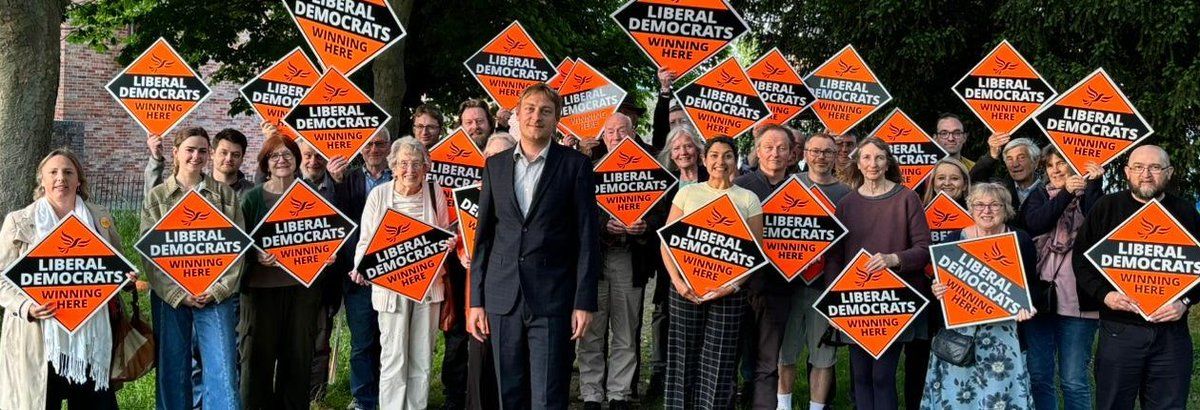
Olly himself seems to be living his best life canvassing round the constituency, while doing some casework around odour from a landfill site.
Thank you to everyone who joined our Wantage canvass today, in lovely weather.
— Olly Glover for Didcot and Wantage 🔶 (@OllyGloverLD) June 2, 2024
Lots of support for the Lib Dems, and little for the Conservatives.
After canvassing in town, I cycled up the A338, visiting houses along the way, and enjoyed the views.
I also met a nice cat! pic.twitter.com/vtAXxVfGDQ
Labour candidate Mocky Khan pointed to local businesses supporting him in Didcot, the party’s strongest base in the constituency. He’s been out on the doorsteps around the constituency and manning street stalls:
I am a fan of local businesses. We need them to be successful to allow for a thriving local economy. Thanks to the businesses on the Broadway for showing their support. @DandWLabourCLP #mocky4didcotandwantage pic.twitter.com/tOdZIFs7aQ
— Mocky Khan (@MockyKhan) June 3, 2024
Henley & Thame
The constituency of Henley has been Conservative since 1885, barring the Liberal landslide of 1906. John Howell’s majority at the last election was 14,053; he is standing down this time. Previous MPs include Michael Heseltine and Boris Johnson.
Therefore you have to admire the chutzpah of the LibDem Henley campaign, including candidate Freddie van Mierlo and deputy leader Daisy Cooper, who floated a boat down the Thames behind Rishi Sunak's press conference at the Henley Regatta.
The PM is in Henley campaigning and chatting to rowers ahead of the Regatta. Right behind him…a boat full of Lib Dem’s appeared @itvmeridian pic.twitter.com/JcWRVRyzXf
— Ciaran Fitzpatrick (@CiaranFitz_) June 3, 2024
The internet exploded. The PM responded. And the internet exploded again.
Classic Lib Dems, always selling voters down the river. https://t.co/HJ0a9neJzb
— Rishi Sunak (@RishiSunak) June 3, 2024
It was a triple whammy for the LibDems. The Thames forms the border with the Wokingham constituency, also a LibDem target, and the river location was a chance for the party to launch a national campaign on sewage dumping.

Conservative candidate Caroline Newton filmed a response video in which she says:
“This river, the Thames, is filthy – it’s a worry to all of us. For years, the regulators haven’t done enough to make Thames Water sort it out. You’ll hear a lot from the LibDems about what they would do if they were in charge. Their funding figures are a fantasy… It would bankrupt the water companies and pile huge costs onto either taxpayers or customers. The Conservatives are making the water companies invest £56bn by 2035 to solve this problem… We calculate they can do that without breaking the companies.”
Like Victoria Prentis campaigning on the Horton hospital, this encapsulates the dilemma for Conservative candidates at this election. All parties agree that sewage discharges into the Thames need to stop. But it’s easy for the LibDems and Labour to say “we would fix this”. A Conservative saying the same risks voters replying “well, why haven’t you?”. So the party’s candidates have to tread a careful line between promising action and defending the Government’s record – resulting in awkward formulations like “We calculate they can do that without breaking the companies”. The LibDems have no compunction about policies that could “break” Thames Water, and we suspect many may agree with them.
Caroline Newton also filmed a video at BP’s global technology centre in the constituency, where they are developing technologies to help the UK transition to Net Zero. Politics aside, the video is worth a watch for a glimpse into emerging technology. She was also on the BBC’s Politics Now, facing up against Oxford East's Anneliese Dodds.
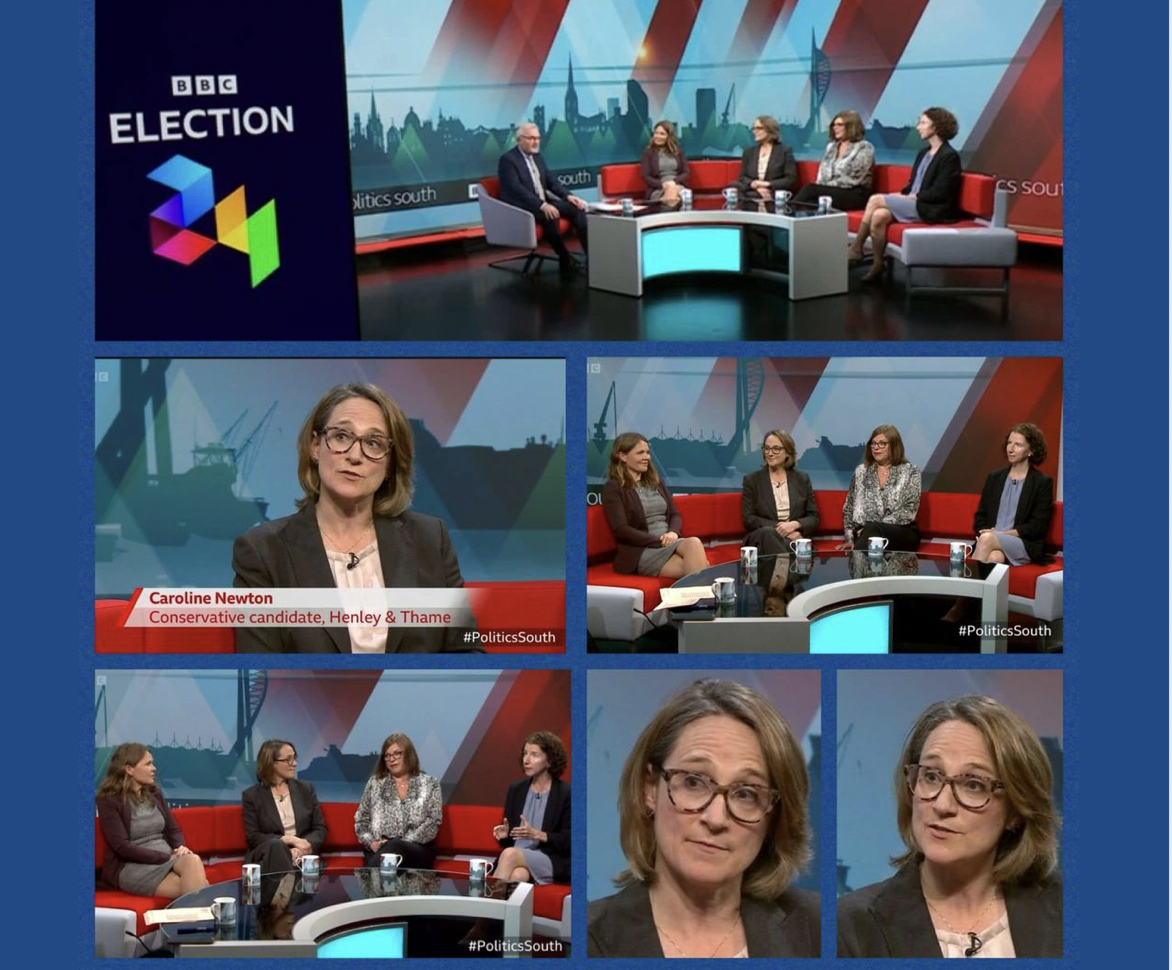
LibDem Freddie van Mierlo has had some unexpected help in the form of former Labour councillor in Oxford, Damian Haywood. He is on a campaigning tour of Oxfordshire canvassing for the most likely candidate to oust the Conservatives, regardless of party:
Thank you!!! https://t.co/WpgSsPNZcI
— Cllr Freddie van Mierlo 🔶 (@fivanmierlo) June 9, 2024
The LibDems themselves have been staging “action days” where campaigners descend on towns and villages in the constituency, starting with Henley itself and Wheatley. They’re trailing a visit from a Guardian reporter to their canvass in Watlington. Guardian coverage may not be to all voters’ taste, but could be crucial in winning tactical votes from Labour supporters.
Oxford East
Oxford East has been Labour since 1987. Prior to that it was Conservative, hard as that might seem to believe today. The Labour majority is 17,832.
Unlike last week where Anneliese Dodds was on her travels (as a Shadow Cabinet Minister and surely incoming Cabinet minister), we have seen her campaigning in the constituency more this week.
Another great session out in Marston and Headington Hill for @AnnelieseDodds
— Brad Baines (@bradtbaines) June 5, 2024
Lots of support on the doorstep for a decade of national renewal under Labour🌹🗳️ pic.twitter.com/H7jxGoi7zL
Labour’s national manifesto is due this coming week, but the party has been trailing select policies from it in advance. Anneliese Dodds highlighted one such, a promise of 80 new rape courts:
Under the Conservatives, just 2.6% of rape cases result in a charge.
— Anneliese Dodds (@AnnelieseDodds) June 9, 2024
Labour will establish 80 new rape courts across England and Wales to deliver justice for survivors.
A key part of our mission to halve violence against women and girls within a decade.https://t.co/eE45B3fyRG
Meanwhile, a rather confected story in the Oxford Mail saw Conservative candidate Louise Brown profess outrage at the LibDems’ Theo Jupp who described Rishi Sunak’s Henley jibe as “Shit chat mate”. Louise Brown described this as “completely inappropriate”. We wouldn’t generally report something so inconsequential, but the LibDem response was an object lesson in turning the tables:
Disappointed that the OM chose not to include our response — pic.twitter.com/BEaGOOO0nA
— Cllr Theo Jupp 🔶 (@TheoJupp) June 6, 2024
As a dual French/British citizen, Theo Jupp made a play for the pro-European vote after having voted in the European elections this weekend:
Just cast my vote in the European Parliament elections. A real shame that this international democratic exercise no longer includes the UK. Only @LibDems will foster a trustful relationship with European partners and aim to return Britain to full membership of the EU. pic.twitter.com/AlTqv5njZV
— Cllr Theo Jupp 🔶 (@TheoJupp) June 9, 2024
The Conservative’s Louise Brown took the fight to Labour on special educational needs – though should Oxfordshire’s well-documented failings be laid at the door of the current LibDem/Green council, the Conservative government who fund them (or not), or the previous Labour portfolio holder? She also campaigned on knife crime in East Oxford with the newly re-elected Conservative Police & Crime Commissioner, Matt Barber.
Is this change people are crying out for going to solve the issues for parents in OxfordEast with regard to SEND and children missing in education due to the Inadequacies of Labour exposed by OFSTED @AnnelieseDodds @EmilyThornberry thinks that larger class sizes are ‘Fine’ https://t.co/hRp23INMNu
— Louise Brown (@votelouisebrown) June 9, 2024
Green candidate Sushila Dhall has launched a crowdfunder for her campaign. The modest target is £2,000 – which doesn’t fund that many leaflets once the £500 deposit has been paid.
As you’ll have seen in our table at the start of the article, Oxford East has 12 candidates – and that’s even without Reform UK standing. These include an anti-trans candidate; Rejoin EU’s Andrew Smith (not the same Andrew Smith who once held the seat for Labour); a candidate from George Galloway’s Workers’ Party; and confusingly, also one from the Workers’ Revolutionary Party. A Clarion correspondent explains the difference:
The WRP are an interesting and almost singularly unpleasant formation: they were one of the largest Trotskyite groups in the UK before their leader was alleged to be a serial rapist/abuser in 1985, and they collapsed into several factions. The loyalist faction has unfortunately proven to have a remarkable amount of sticking power, supposedly due to funding from Colonel Gaddafi in the 70s and 80s allowing them to continue production of the UK's cheapest, and worst, daily newspaper. They don't currently have an Oxford branch, but have been trying to expand here – they were recruiting at the Palestine encampment before being removed.
We’re still waiting for the Oxford Mail’s (BBC-funded and, as such, impartial) Local Democracy Reporter to offer other candidates the same profile gifted to anti-LTN independent David Henwood. Maybe this week?
Oxford West & Abingdon
This constituency has been Liberal Democrat since 2017 when Layla Moran won it from the Conservatives with a majority of 816. In the 2019 election, her majority increased to 8,943.

Moran has been recovering from sepsis, recovering in time for Pride this weekend. She and her team have been campaigning on GP waiting times, sewage in Oxfordshire rivers (we're sensing a co-ordinated campaign across Oxfordshire here) and highlighting the volume of casework undertaken:
Over 150,000 patients in Bucks, Ox and W. Berks waited 2 weeks or more to see a GP in April.
— Layla Moran 🔶🕊️ (@LaylaMoran) June 4, 2024
Doctors and nurses are trying their best, but the Tories have decimated our NHS.
That’s why I’m pushing to create more training opportunities so that we can increase the number of GPs. pic.twitter.com/Mi3us2RhpD
She also put out this tweet on how to vote anonymously, which we highlight as we've not seen it anywhere else:
Survivors of domestic abuse can register to vote anonymously in the next general election. Here's how: https://t.co/4f5tz0JZe6
— Layla Moran 🔶🕊️ (@LaylaMoran) June 6, 2024
Conservative Vinay Raniga is her main challenger. The prevailing electoral winds may be against him but he's fighting hard, with a big campaign team out in Cutteslowe and Radley. He was punchy on the Conservatives' achievements in government, saying that the Conservative Party isnt just for the older generation, but that these policies were centred around helping young people aspire for more.
A stellar team (including my dad) out today in Cutteslowe speaking to neighbours about what’s important to them.
— Dr. Vinay Raniga (@RanigaVinay) June 5, 2024
We’re non-stop here in Oxford West & Abingdon.
If you want a strong @Conservatives voice in Parliament that will deliver for you, #VoteForVinay on July 4. pic.twitter.com/TXwsuXscYh
David Cameron also took time to campaign in Oxford West & Abingdon – and if he did this, we assume the Conservative Party expect great things of this candidate in the future. One to watch?
I spoke with former Prime Minister and current Foreign Secretary @David_Cameron in Oxfordshire yesterday.
— Dr. Vinay Raniga (@RanigaVinay) June 8, 2024
As the world gets more dangerous and unpredictable, we need a strong, @Conservative voice that puts the defence of our country front and centre. pic.twitter.com/A2vNnOcJyJ
Witney
Unlike a night-time London cabbie, candidates for Witney have had to learn to go south of the river. The seat formerly shared boundaries with West Oxfordshire district, but now that Chipping Norton has transferred to Banbury, Witney has gained a few wards south of the Thames to compensate – notably Faringdon.
The previous seat had been Conservative since 1983, and has had illustrious MPs including Douglas Hurd and David Cameron. Conservative MP Robert Courts enjoyed a majority at the last election of 8,770, down from David Cameron's peak of 25,155.
The Liberal Democrats were the main challengers last time, and look set to reprise that role again. Centre-left thinktank Compass were campaigning in Witney Market Place for LibDem candidate Charlie Maynard, who they think has the best chance against Robert Courts:
Compass Oxon today in Witney, encouraging people to vote tactically for the Lib Dem candidate, Charlie Maynard. @cammaynard supports PR and is best-placed to make history by deposing the Tories from their long-held Witney seat. pic.twitter.com/VkfCt0Sty5
— Oxfordshire Compass (@Compass_Oxon) June 4, 2024
Both this campaign and the candidate himself got a namecheck in a well-researched Guardian piece talking about LibDem target seats in Oxfordshire:
He’s the kind of candidate – background in finance, seat on the local council, pictures on his website of the family labrador – that the Lib Dems invariably select for seats like this one, which has been Conservative for more than a century.
D-Day attendance has been more or less de rigeur for candidates this week, as you may have seen in the news, while Charlie Maynard has also picked up the national Liberal Democrat policy on carers.
It was very moving on Saturday morning being with the Faringdon @PoppyLegion celebrating their 100th anniversary. pic.twitter.com/UmagKCbZGP
— Charlie Maynard 🔶 Liberal Democrat (@cammaynard) June 3, 2024
Previous Labour candidate Georgia Meadows stood down this week, though not before she’d been officially adopted by Labour’s National Executive Committee. Georgia is a 22-year old Witney Town Councillor and describes herself as trans, autistic and a care leaver. She says her decision to stand down was for family and personal reasons. General election campaigns can be gruelling, especially in the social media age, so we can understand her second thoughts and send her our best wishes.
Georgia Meadows has stood down as Labour’s candidate for the Witney constituency. She says “the snap nature of this election has caused me to reflect on whether now is the right time to put myself forward”. https://t.co/sTcwPUuMlY
— Oxford Clarion (@OxfordClarion) June 4, 2024
Georgia has been replaced by Antonio Weiss, who has a PhD and is a public services and technology expert. He was previously shortlisted for Ruislip and is a councillor for Marlborough ward in the London Borough of Harrow, where he has an impressive attendance record: he was first elected in 2014 and has since been re-elected twice.
🗳️Witney deserves better than 14 years of failure from the Tories.
— Cllr Antonio Weiss (@antonioeweiss) June 5, 2024
On 4 July, only voting @UKLabour in Witney will give you a strong voice in the next government.
It's a privilege to be your candidate. My best wishes to @MsGrgaMeadows .
Let's make something special happen.🌹 pic.twitter.com/pB5T4qqSCo
Perhaps in response to David Cameron’s Oxfordshire tour, Labour wheeled out the big guns – though admittedly the big guns of 15 years ago. Former Home Secretary Jack Straw is a local resident, owning a home in Minster Lovell (Oxfordshire’s prettiest village?) since the 1990s:
Jack Straw knows a thing or two about politics so when he says it's a three-horse race in #Witney, it's worth paying attention.
— Cllr Antonio Weiss (@antonioeweiss) June 9, 2024
Sound advice to residents that if you want a strong voice in the next government and to turn the page after 14 years of failure then #VoteLabour pic.twitter.com/neJ8uhRN8W
At the Clarion we are a little surprised that in Witney, a town where Labour is strong, the party has chosen to bring in a candidate from London. But the leader of Witney Town Council, Labour’s Ruth Smith, wryly observed that local politicians might not always pass national party vetting.
Conservative incumbent Robert Courts has been campaigning on rural broadband, roads and trains, as well as the obligatory D-Day visit. Witney is the Conservatives’ best chance in Oxfordshire at this election but Courts is not taking anything for granted, with an itinerary of ministerial apperances – inevitably including one from David Cameron, who lives in the constituency – and constituency visits.
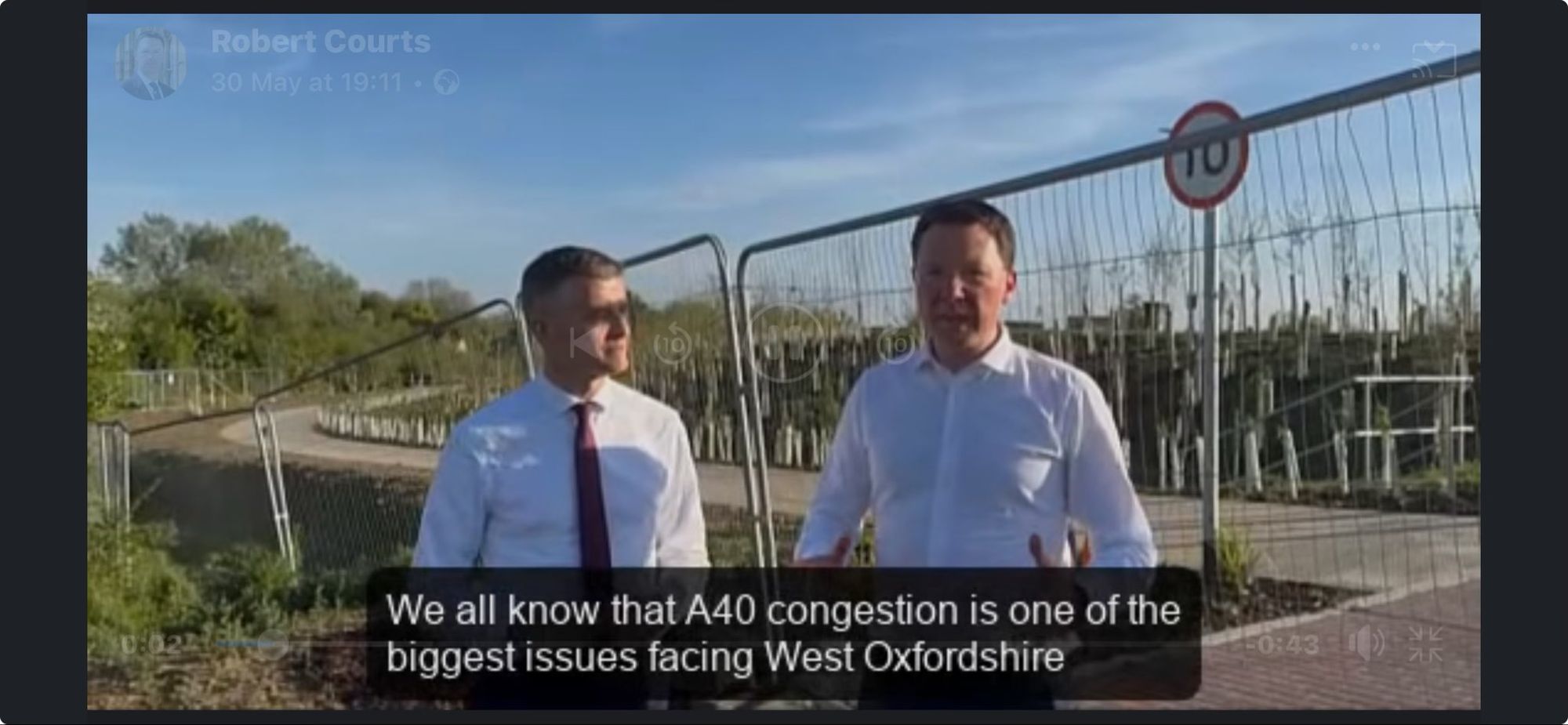
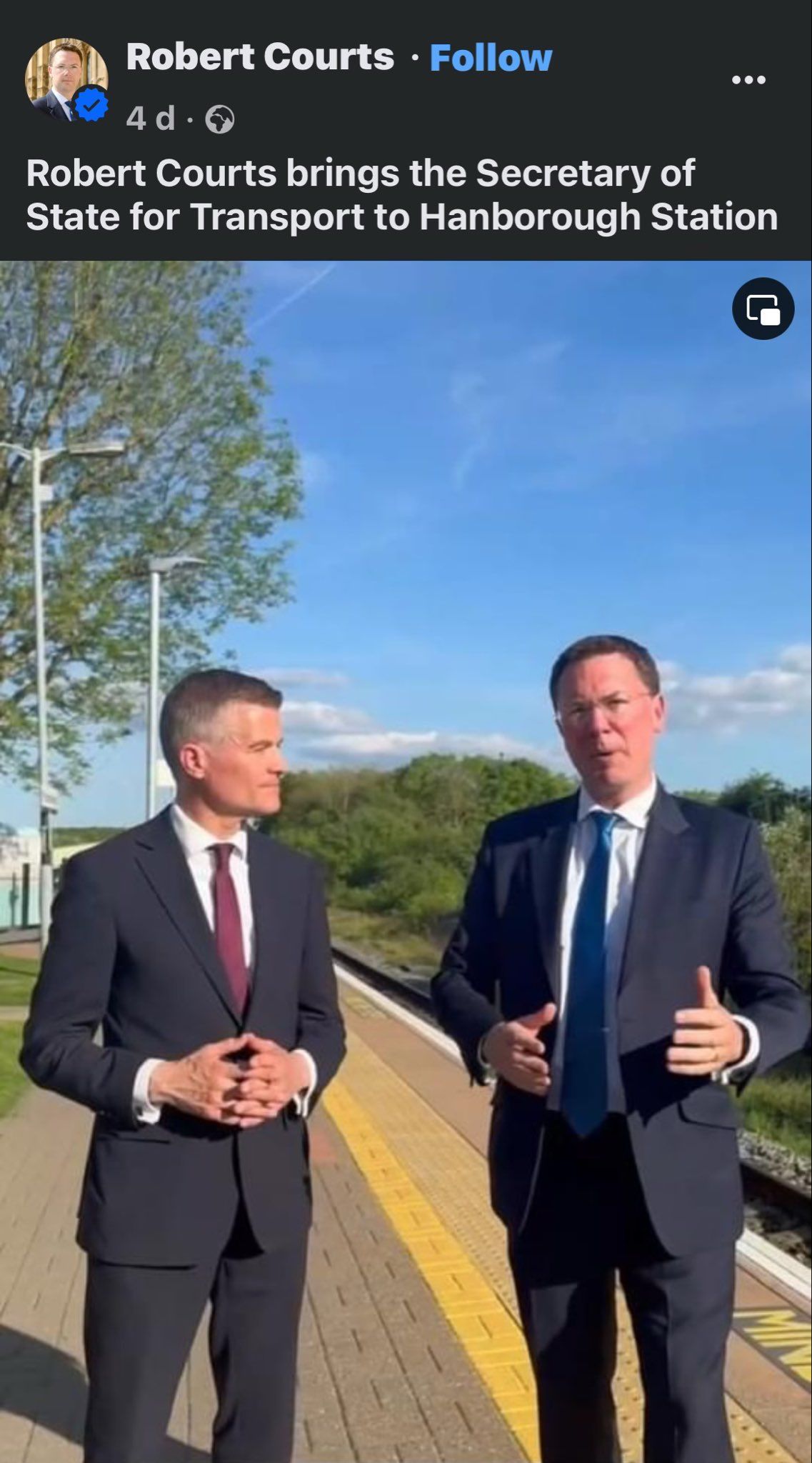

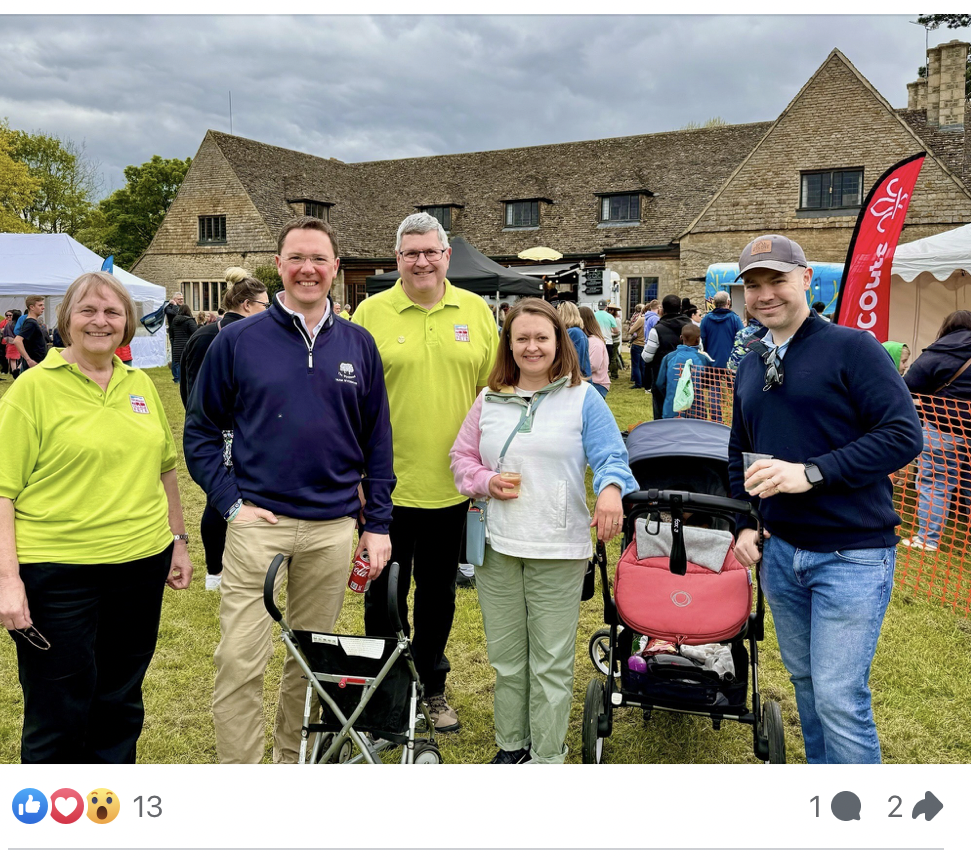
Around the country
Former Labour City Councillor for St. Clements Tom Hayes is up for election in Bournemouth. Bournemouth East has been Conservative since 1974, and Conservative incumbent Tobias Ellwood’s majority at the last election was 8,606 – so Labour has a hill to climb, but momentum (with a small 'm') may well be with them.
Oxford’s Luke Akehurst has continued to make waves around both his policy positions on Gaza and the fact he has been allocated a “safe seat” in North Durham. On a lighter note, the LibDem candidate standing against Akehurst in North Durham has offered to be a tour guide of Durham for any other candidates coming north:
I'm offering Lab's Oxford based candidate a tour of the area, my Lib Dem colleagues in Oxford have already taken to the streets to advertise my services for any other prospective Lab candidates coming up North
— Cllr Craig Martin (@cmartinLD) June 5, 2024
Read my press release:https://t.co/aDOKlVHQ6V pic.twitter.com/1EKnFSJyyn
What’s coming up?
The national manifesto launches this week mark a turning point in the campaign – and a chance for local campaigning to become harder-hitting as canvassers talk up what their proposals will mean for Oxfordshire.
Meanwhile, election tacticians will be poring over canvass returns, analysing whether they still have a chance in their target constituencies or whether manpower (and money) would be best deployed elsewhere.
We too will be choosing where to focus our efforts from next week’s diary, concentrating on the serious contenders in each constituency. But could we yet see a rapid twist in fortunes in any of the Oxfordshire seats? Join us this time next week.
